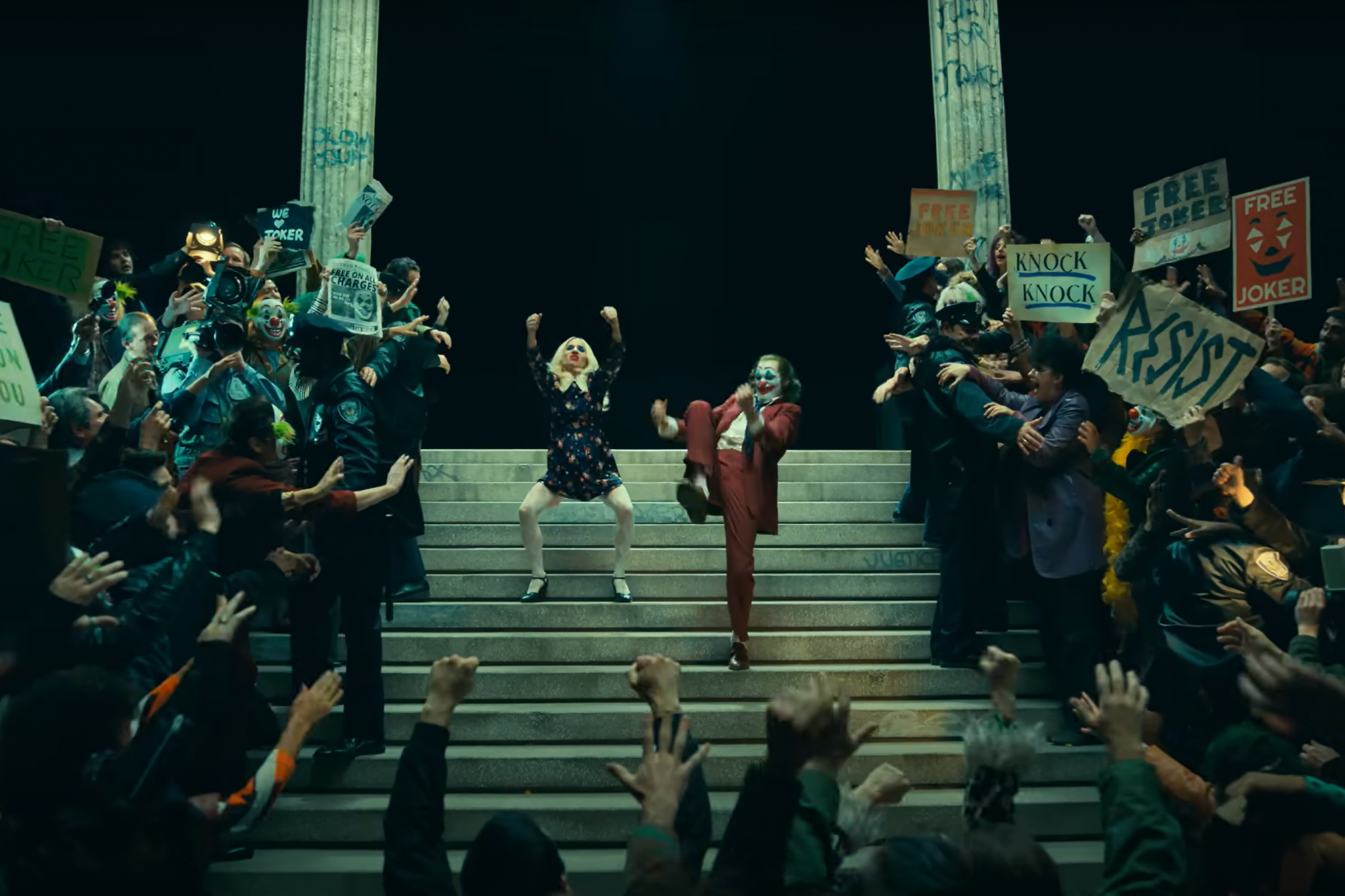When La La Land meets a mind boggling thriller, Joker: Folie à Deux is the byproduct.
Joaquin Phoenix returns as Arthur Fleck — otherwise known as the legendary, sinister DC comics villain, The Joker — in a role that won him a Best Actor Oscar in 2020. New to the production as his partner-in-crime is Lady Gaga, who takes on the role of the deceptive and convincing Lee Quinzel.
The film opens with a glimpse into Fleck’s incarceration as he awaits his trial after he murdered Murray Franklin, played by Robert De Niro, on live television.
On the way to meet his lawyer, he walks past a music class where he spots a blonde-haired Quinzel, known to the audience as Harley Quinn, singing with a group of other prisoners. After stepping out of the class, she locks eyes with Fleck — sparking an instantaneously romantic and musical connection.
[Pitt and Clooney drown ‘Wolfs’ plot with paralleled chemistry]
The exposition draws in the audience, soon enthralled in all the glitz and glam from the show put on by the film. Through these musical numbers, many of the visual aspects are theatrical and exaggerated, expressing the consequences of being so caught up in everything going on that one can not separate themselves from fiction and reality.
But with more than 15 songs, this film delivers more musical than drama.
Folie à Deux appears to be a critique of the original film. After the first Joker installment, it seemed that pop culture glorified the character — forgetting there was a murderer behind the easily mimicked clown makeup.
Fleck’s murder trial is referred to as a “Media Frenzy” and the “Trial of the Century,” which puts even more attention on his doings and actions. Outside of the courthouse were crowds of people protesting while others assumed the character of “The Joker,” as if he did not commit a serious crime.
It is a harsh awakening to how the world may continuously glamorize violence through sensationalism and romanticizing a person’s horrendous actions. Quinn’s character and obsession with Fleck is a prime example, but the message is not explicitly displayed to viewers.
Instead, the movie forces you to think outside of the box and try to discover what is conveyed — not only through words, but also through visuals. The array of color and beautifully crafted set designs fully immersed the viewer in the story, getting us lost in all of the glamor around Joker’s performances.
Director Todd Phillips structured it so viewers were a part of the problem as we progressed on the same path as Joker. It takes time for Joker to recognize this character was not who he truly was, and once he realizes, us as viewers start to see this too. In doing so, it creates a meta commentary on the audience’s engagement with real life crime, and the characters crafted out of it.
This constant reference in the film to “theater is all entertainment” further emphasizes this point. Fleck’s life is now a production put on for entertainment, but he leans into feeding the audience with this character that they have glamorized to be a public figure.
[Former NBA player reflects on time at UMD, heritage in new documentary]
As the film progressed, some songs grew unnecessary and stole some anticipated spark from more important numbers.
Gaga is known for her music, so there was no surprise to the talent she exhibited on screen for every number. Phoenix also stepped up to the challenge with vocals to live up to his on screen counterpart. The duo blended together seamlessly.
Like its predecessor, Folie à Deux is already looking to be divisive. Those who pick up on the message will appreciate the film and understand why certain plot points were so pivotal, and those who are stuck in the glamorized mindset will feel the film is lacking in content and an insufficient sequel.



